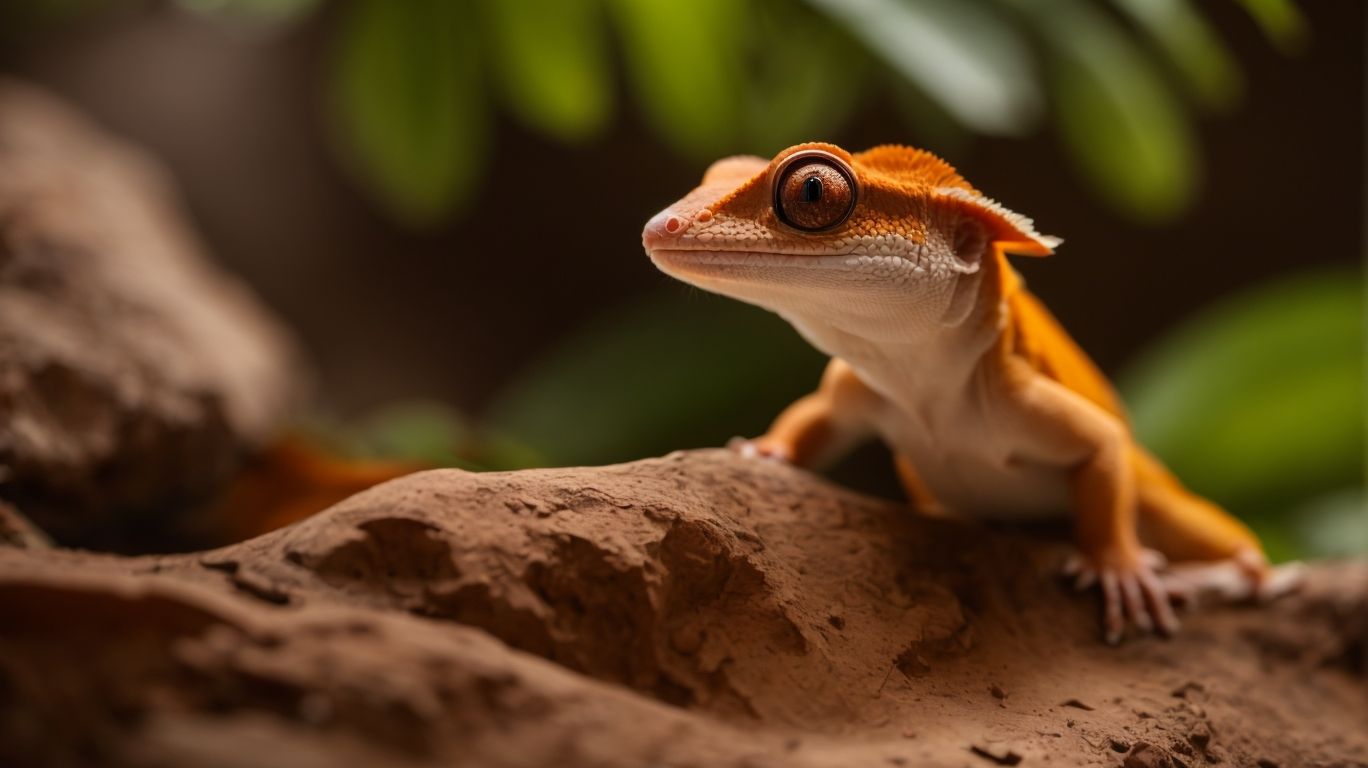
Social Behavior in Crested Geckos: Insights for Cohabitation
Crested geckos are fascinating creatures known for their unique social behavior. From aggression to courtship and mating, these reptiles exhibit a wide range of social interactions that are important to understand, especially if you’re considering cohabitating them.
In this article, we’ll explore the different types of social behavior in crested geckos, the potential risks and benefits of cohabitation, and how to promote positive social interactions. Whether you’re a seasoned gecko owner or considering getting one, this article will provide valuable insights into the social dynamics of these captivating creatures.
What Is Social Behavior in Crested Geckos?
Social behavior in crested geckos involves a range of fascinating insights into their communication, interactions, and environmental enrichment.
Reptiles, such as crested geckos, have evolved a distinct set of communication techniques. These include body postures, vocalizations, and pheromones, which they use to convey intentions and establish social hierarchies. Their interactions can range from courtship displays to territorial disputes, offering a fascinating insight into their social dynamics.
In captivity, providing environmental enrichment is crucial for promoting the social well-being of crested geckos. This can involve opportunities for exercise, exploration, and mental stimulation. By understanding and accommodating their social needs, we can contribute to the overall welfare of these reptiles.
Why Do Crested Geckos Exhibit Social Behavior?
The social behavior of crested geckos is a crucial aspect of their nature, allowing them to thrive in communal settings. Through their interactions, these geckos establish hierarchies within their groups, promoting order and stability. This social structure also facilitates resource sharing and protection against predators.
One fascinating aspect of their social behavior is their ability to recognize familiar individuals within their group. They use visual and olfactory cues to differentiate between group members and potential outsiders, ensuring a cohesive and cooperative living environment.
What Are the Different Types of Social Behavior in Crested Geckos?
Crested geckos demonstrate various types of social behavior, including aggression, territorial behavior, courtship and mating rituals, and group living dynamics.
Crested geckos are known for their territorial behaviors, which involve marking their territories with pheromones to establish dominance and deter competitors.
During courtship and mating, male crested geckos may put on elaborate displays to attract females, showing off their vibrant colors and vocalizations.
The group dynamics of crested geckos are fascinating, as they often form loose social structures and communicate through visual and olfactory cues. This allows for cooperative behaviors such as resource sharing and communal defense.
Aggression
Aggression in crested geckos can manifest through territorial disputes, displays of dominance, and submissive behavior within their social hierarchy.
In their natural habitat, crested geckos often establish territories and defend them from intruders. This includes displaying aggressive behaviors to assert their dominance. This aggression can be seen during feeding times, mating rituals, and when encountering unfamiliar geckos.
The dominant individuals may exhibit body language indicating their superiority, while the submissive geckos may cower or retreat to avoid confrontation. It is important to understand these dynamics in order to create a suitable environment for multiple geckos to coexist with minimal stress and aggression.
Territorial Behavior
Territorial behavior in crested geckos encompasses actions such as territorial marking, social recognition, and conspecific recognition to establish boundaries and social hierarchies.
Territorial marking is an important behavior for crested geckos, who use scent glands on their underbellies to leave pheromone trails around their chosen territories. This allows them to communicate their presence to other geckos and assert their ownership of the area.
In addition to territorial marking, social recognition is also crucial for crested geckos. This allows them to distinguish between familiar and unfamiliar conspecifics, helping them avoid potential conflicts and maintain a harmonious hierarchy within their social groups.
Courtship and Mating
Courtship and mating among crested geckos involve bonding rituals and the development of mutualistic relationships to ensure successful reproduction.
Bonding rituals are a crucial aspect of crested gecko mating, involving displays and behaviors like head bobbing, tail waving, and vocalizations. These actions allow geckos to establish a connection and communicate their readiness to mate.
Mutualistic relationships are essential for successful reproduction in crested geckos, fostering trust and compatibility between mates. This bond greatly impacts breeding activities and the raising of offspring. As such, understanding the significance of bonding is crucial for those caring for and breeding crested geckos in captivity.
Group Living
Group living behavior in crested geckos involves intricate social organization and communal behavior, shaping their social structure and dynamics.
Crested geckos, like many other animals, form social hierarchies and territories within their groups. These dynamics greatly influence their interactions and resource allocation.
Interestingly, communal behaviors such as sharing hiding spots and foraging locations play a crucial role in maintaining group cohesion. Through dynamic communication, which includes vocalizations and body language, these creatures navigate their social interactions and promote balance within the community.
Studying and understanding these aspects not only sheds light on the complexities of their social organization, but also highlights the importance of communal behaviors in promoting group harmony.
How Does Social Behavior Affect Cohabitation in Crested Geckos?
The social behavior of crested geckos significantly influences their cohabitation dynamics, impacting social tolerance and presenting various social challenges.
Understanding the social dynamics of crested geckos is crucial for successful cohabitation. Social tolerance plays a key role in maintaining harmony among geckos sharing the same space.
Social challenges such as dominance disputes and territorial behaviors are common, requiring careful observation and management. Implementing strategies like providing ample hiding spaces and separate feeding areas can help mitigate potential conflicts and ensure a balanced cohabitation environment for these fascinating reptiles.
What Are the Risks of Cohabitation in Crested Geckos?
Cohabitation of crested geckos carries risks related to potential aggression, stress, and social disruptions within their living environment.
These risks can lead to severe consequences, such as injuries, loss of appetite, and even death.
When crested geckos are housed together, they may compete for resources, including food, hiding spots, and basking areas. This competition can induce stress and disrupt their natural behavioral patterns. Territorial disputes and dominance struggles can escalate into aggressive interactions, posing a threat to the well-being of the geckos. Therefore, it’s crucial to carefully assess the compatibility and individual needs of each gecko before considering cohabitation as an option.
Are There Any Benefits to Cohabitation in Crested Geckos?
Cohabitation among crested geckos can offer benefits such as social bonding opportunities and enhanced social interactions within a shared habitat.
This shared living arrangement can mimic their natural behavior in the wild, promoting healthy social dynamics and reducing stress.
Cohabitation allows for the potential for shared resources, such as climbing structures and hiding spots, leading to increased enrichment and stimulation. It also encourages natural behaviors like territorial displays and mating rituals, contributing to a more enriched and dynamic gecko community.
What Are the Signs of Aggression in Crested Geckos?
Recognizing aggression in crested geckos involves understanding their social signals, territorial disputes, and indicators of potential conflict.
Crested geckos can display aggression through various forms of body language, such as stiffening, tail wagging, and vocalizations. This behavior is often seen in territorial disputes, especially when multiple geckos are housed in the same enclosure and competing for resources.
Physical signs of conflict may include biting, chasing, and aggressive posturing. As a responsible owner, it’s crucial to be observant of these behaviors to ensure the well-being of your crested geckos and prevent potential injuries or stress.
How Can You Promote Positive Social Behavior in Crested Geckos?
Promoting positive social behavior in crested geckos involves providing adequate environmental enrichment and opportunities for social learning.
This can be achieved by creating a habitat rich in hiding spots, climbing branches, and plants to mimic their natural environment. Introducing multiple geckos in a spacious enclosure allows them to observe and learn from each other’s behaviors. Social interactions, such as communal feeding stations and basking areas, can also encourage positive social behavior.
By prioritizing environmental enrichment and social learning opportunities, crested geckos can thrive and exhibit their natural behaviors in captivity.
Providing Adequate Space
Ensuring adequate space for crested geckos is crucial for promoting a positive social environment and facilitating healthy social dynamics.
Providing sufficient space for crested geckos is crucial for their physical and mental well-being. This allows them to engage in natural behaviors like climbing, hiding, and exercising. Additionally, a spacious habitat reduces the likelihood of territorial conflicts and stress, promoting harmonious interactions between the geckos.
Having enough room also allows for the establishment of hierarchies and learning of social cues, contributing to the geckos’ social development. Furthermore, ample space encourages exploration and helps prevent boredom, resulting in more active and contented crested geckos.
Introducing Geckos Properly
Properly introducing geckos involves recognizing the importance of conspecific recognition and understanding their social intelligence for successful interactions.
When introducing geckos to each other, it’s important to do it gradually to allow them to become familiar with each other’s scents and presence. During the initial interactions, pay attention to their body language and behavior to gain insights into their acceptance of the new companion.
Make sure the enclosures are spacious enough to provide separate areas for geckos to retreat if needed, reducing the potential for territorial disputes. It’s crucial to consistently monitor their interactions and be patient as they adjust to each other. This demonstrates respect for their natural social dynamics and fosters harmonious cohabitation.
Monitoring Interactions
Monitoring interactions among crested geckos involves observing their social cues and understanding the dynamics of their social structure for early intervention if needed.
Paying attention to their body language, vocalizations, and territorial behaviors can provide valuable insights into the relationships and hierarchies within crested gecko groups. This includes recognizing signs of aggression, submission, or bonding dynamics. By understanding these social interactions, caretakers can mitigate potential conflicts and ensure the well-being of the geckos.
Not only does understanding their social dynamics promote a harmonious environment, but it also contributes to the overall health and happiness of these fascinating creatures. By breaking up the text into concise, easily digestible sentences, we can enhance readability and improve SEO for this topic.
What Are the Alternatives to Cohabitation for Crested Geckos?
For crested geckos, alternatives to cohabitation involve implementing strategies to manage social tolerance and territorial behavior in separate enclosures.
This approach helps to reduce stress and potential conflicts among crested geckos, providing a more conducive environment for their well-being.
By creating distinct living spaces for each gecko, keepers can carefully monitor their behavior and interactions, ensuring that each individual’s needs are met. This method allows for focused observation and targeted adjustments to the environment to promote harmonious coexistence among the geckos.
Understanding the nuances of social dynamics and implementing appropriate housing strategies is essential for maintaining the health and happiness of crested geckos.




No Comments